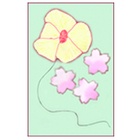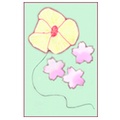“Multiracial identity” didn’t become a part of my regularly accessed vocabulary until college. The phrase floated through conversations in junior high and high school, mainly during statewide and national standardized testing seasons (i.e. Stanford 9 during the Spring semester). “Multiracial identity”, as an idea that oftentimes provokes steamed discussion and a topic of particular interest to me, became a concept that I seriously probed when I took a course called “The American Experience” in college.
It was also in college, after reading several books and articles on race/ethnicity, that I started to prefer using the term ethnicity over race, with a few exceptions. Although the two terms are similarly defined, sometimes race just sounds better when used with other words, like “race relations” and “multiracial.” Being a so-called “biracial” (the word “biethnic” is not ear-pleasing), I felt my personal experiences contributed a unique and important aspect to the “American experience” of my generation.
In my “American Experience” class, we studied early American history and important figures in early American literature through current events in the U.S. and contemporary U.S. American authors. We discussed the celebrated works of American writer, Walt Whitman. We also read and discussed Gish Jen’s novel, Mona in the Promised Land. Both of these works were examples of people exploring and celebrating—and struggling along the way—American identity.
In a response essay I wrote about Whitman’s poem, “I Hear America Singing,” I praised Whitman for praising the common people—the hard-working workers he saw everyday laboring their bodies. Each skilled trade Whitman recognizes in his poem, including the role of the woman, I saw as a symbol of the universal struggle of the common man. I interpreted Whitman’s poem as a vision for the future, each occupation symbolizing the growing ethnic diversity of America. I think Whitman knew, early on, the inevitability of the United States becoming the center of immigration.
Then we read Mona in the Promised Land. The story is about an adolescent Chinese American girl living in upstate New York with her Chinese immigrant parents and older sister. They are the only non-White families living in their affluent neighborhood in the 1960s. Mona goes through a typical and atypical adolescent experience. “Typical” in that like her American peers, Mona experienced an American adolescent identity crisis in the U.S. “Atypical” because her cultural upbringing was unlike her friends’ and for that, couldn’t relate to her peers. Mona experiments with religion, boyfriends (Asian and non-Asian) and struggles with self-identity throughout the story. She constantly argues with her mother about what is Chinese and what is American and interestingly, for the both of them, there is no happy medium. For Mona’s mother, Mona should be more Chinese. But Mona wants to be recognized by her family and friends as a “typical” American, someone who looks like her White American Jewish friends.
The subtle connection I see between Whitman’s 1900 poem and Gish Jen’s 1997 novel is their chronological role reversal. Jen’s Mona goes through an American identity crisis in the 1960s and ‘70s because her physical features don’t resemble the majority of her friends’. Mona questions her and her family’s Chineseness and then whines her way through ordaining herself into the Jewish faith. Whitman, on the other hand, subtly answers Mona’s question a century prior—that diversity in America is inevitable and that there are universal truths in the human experience. Ethnic and cultural self-identity is not one of them.
When I think about what the U.S. will be like 50 years from now, I sometimes fear that people of multiple ethnic heritages will be extremely confused with how to identify themselves ethnically and culturally, which are two completely separate things. The endless family trees to research, the weight of obligation (depending on the person) in how they identify themselves, etc. For example, half Black, quarter Chinese, quarter Japanese American. That’s a mouthful when describing one’s ethnic heritage, and that’s only three. But it’s inevitable.
I wonder what my children and great-grandchildren will experience if or when they go through their own adolescent identity crisis—whether their crises will be centered on ethnicity or on not knowing what to be when they grow up. I hope it’s mainly the latter and that by that time being multiethnic will be the norm.
© 2007 Victoria Kraus




